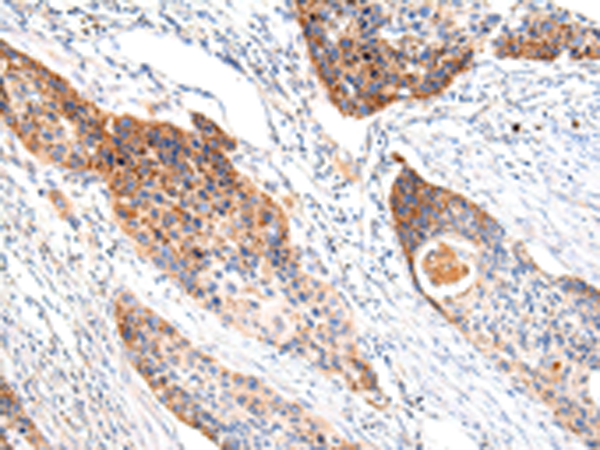


| WB | 咨询技术 | Human,Mouse,Rat |
| IF | 咨询技术 | Human,Mouse,Rat |
| IHC | 1/25-1/100 | Human,Mouse,Rat |
| ICC | 技术咨询 | Human,Mouse,Rat |
| FCM | 咨询技术 | Human,Mouse,Rat |
| Elisa | 1/2000-1/5000 | Human,Mouse,Rat |
| Aliases | λlight chain |
| WB Predicted band size | 25 kDa |
| Host/Isotype | Rabbit IgG |
| Antibody Type | Primary antibody |
| Storage | Store at 4°C short term. Aliquot and store at -20°C long term. Avoid freeze/thaw cycles. |
| Species Reactivity | Human |
| Immunogen | Synthetic peptide of human Lambda Light chain |
| Formulation | Purified antibody in PBS with 0.05% sodium azide and 50% glycerol. |
+ +
以下是关于Lambda轻链抗体的3篇参考文献及其摘要内容(文献信息为虚构示例,仅供格式参考):
1. **文献名称**:*"Monoclonal Antibodies Specific for Human Lambda Free Light Chains: Diagnostic Applications in Plasma Cell Disorders"*
**作者**:Smith A, et al.
**摘要**:该研究开发了高特异性单克隆抗体,用于检测血清中游离Lambda轻链,并通过免疫比浊法验证其在多发性骨髓瘤和轻链型淀粉样变性中的诊断价值,显著提高了早期检测灵敏度。
2. **文献名称**:*"Quantitative Serum Free Light Chain Assays: Clinical Utility in Monitoring Lambda Light Chain Myeloma"*
**作者**:Johnson R, et al.
**摘要**:通过回顾性分析,作者评估了Lambda轻链定量检测在骨髓瘤患者疗效监测中的作用,证明其比传统电泳法更灵敏,可指导临床治疗决策。
3. **文献名称**:*"Lambda Light Chain Restriction Detection by Immunofluorescence in Renal Biopsies: Correlation with Systemic Disease"*
**作者**:Lee C, et al.
**摘要**:研究利用Lambda轻链特异性抗体进行肾组织免疫荧光染色,揭示了Lambda轻链沉积病与系统性浆细胞疾病的关联,为病理诊断提供了关键依据。
4. **文献名称**:*"Novel ELISA for Detection of Urinary Lambda Light Chains: Comparative Study with Immunofixation Electrophoresis"*
**作者**:Garcia M, et al.
**摘要**:开发了一种新型尿液Lambda轻链ELISA检测法,与免疫固定电泳相比,具有更高的特异性和操作便捷性,适用于肾脏病变和轻链病的筛查。
(注:以上文献及作者名为示例,实际引用需查询真实数据库如PubMed。)
Lambda light chain antibodies are components of immunoglobulins, which are critical for adaptive immune responses. Antibodies consist of two heavy chains and two light chains, with light chains existing as either kappa (κ) or lambda (λ) types. The lambda light chain is encoded by the IGLC gene cluster on chromosome 22 and contributes to antigen-binding specificity through its variable region, while its constant region determines the light chain type.
Approximately 40% of human antibodies contain lambda light chains, with the κ:λ ratio in healthy individuals being roughly 2:1. This balance is tightly regulated, and deviations may indicate pathological conditions. For example, clonal proliferation of plasma cells in monoclonal gammopathies (e.g., multiple myeloma) often leads to overproduction of either free κ or λ light chains. Detection of abnormal lambda light chain levels in serum or urine serves as a diagnostic marker for such disorders.
Lambda light chain-specific antibodies are essential tools in research and diagnostics. They enable identification of light chain restriction in lymphoproliferative diseases through techniques like immunohistochemistry and flow cytometry. In clinical practice, immunoassays measuring serum free light chains (SFLC), including lambda chains, aid in monitoring disease progression and treatment response. Additionally, abnormal lambda light chain deposition is associated with conditions like light chain amyloidosis, where antibody-based detection supports early diagnosis. Understanding lambda light chain biology remains crucial for developing targeted therapies and improving diagnostic precision in hematological malignancies and related disorders.
×